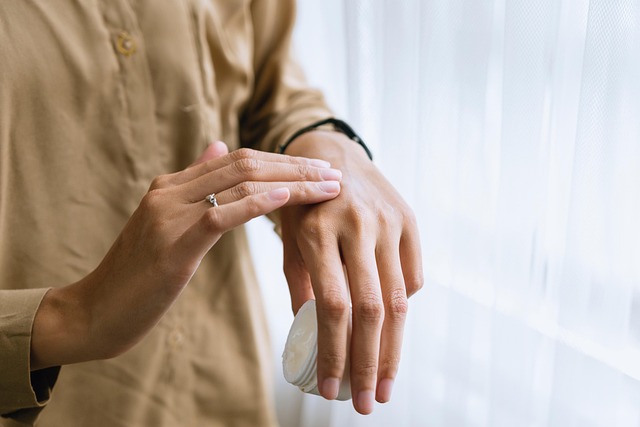Dermatitis in Seniors – Symptoms, Causes, and Relief Tips
Dermatitis is a common skin condition among seniors, often leading to itching, redness, and discomfort that can interfere with daily life. Aging skin becomes more sensitive, making it easier for irritants, allergies, or underlying health issues to trigger flare-ups. Recognizing the symptoms and knowing effective relief tips can greatly improve comfort and skin health.

Common Dermatitis Symptoms in Seniors
Seniors experiencing dermatitis may display various symptoms that differ from younger adults due to age-related skin changes. Recognizing these signs early can lead to more effective treatment:
-
Persistent dryness and scaling that may be more severe than in younger individuals
-
Redness and inflammation that can appear more pronounced on thinner aging skin
-
Intense itching (pruritus) that can disrupt sleep and daily activities
-
Skin thickening and increased wrinkling in chronically affected areas
-
Small fluid-filled blisters that may ooze and crust over
-
Discoloration and uneven skin tone in affected areas
-
Increased sensitivity to previously tolerated products or materials
-
Burning or stinging sensations, especially after applying products
-
Cracked or fissured skin that can lead to secondary infections
These symptoms may appear anywhere on the body but commonly affect the hands, face, neck, and areas with skin folds where moisture can accumulate.
Causes of Dermatitis in Older Adults
Several factors contribute to the development of dermatitis in seniors, often working in combination to create skin irritation:
-
Age-related decreases in natural skin oils and moisture retention
-
Reduced immune function that alters inflammatory responses in the skin
-
Cumulative sun damage leading to compromised skin barrier function
-
Medication side effects, particularly from diuretics, antibiotics, and pain relievers
-
Environmental factors such as low humidity and temperature extremes
-
Contact with irritants in soaps, detergents, and personal care products
-
Allergic reactions to new medications or topical treatments
-
Pre-existing conditions such as diabetes that affect skin health
-
Poor circulation leading to inadequate skin nutrition and oxygenation
-
Stress and anxiety which can trigger or worsen inflammatory skin conditions
-
Nutritional deficiencies common in older age
Understanding these underlying causes helps guide effective treatment approaches and preventive measures.
How to Recognize Skin Irritation in Seniors
Identifying dermatitis in seniors can be challenging as symptoms may be attributed to normal aging or other health conditions. Here are key indicators to watch for:
Skin changes in seniors often develop gradually, making them easier to overlook. Regular skin checks should be part of routine care for older adults, especially those with limited mobility or cognitive impairments who may not report symptoms. Pay special attention to areas that are frequently overlooked, such as between toes, under breasts, the groin area, and behind the ears.
Changes in behavior, such as increased scratching, restlessness, or irritability, may indicate skin discomfort in seniors who cannot clearly communicate their symptoms. Additionally, secondary signs like unexplained sleep disturbances or reluctance to participate in normal activities might suggest underlying skin irritation that needs attention.
Differentiating dermatitis from other skin conditions is important. While conditions like psoriasis, fungal infections, or skin cancer may present similarly, dermatitis typically responds to moisture and anti-inflammatory treatments. When in doubt, a dermatologist with experience treating geriatric patients should evaluate persistent or concerning skin changes.
Effective Relief Tips for Dermatitis
Managing dermatitis in seniors requires a gentle, consistent approach to soothe irritation and prevent flare-ups:
Maintaining proper skin hydration is fundamental to dermatitis management. Seniors should use gentle, fragrance-free moisturizers applied immediately after bathing while the skin is still slightly damp to lock in moisture. Creams and ointments generally provide better hydration than lotions for aging skin. For severely dry areas, petroleum jelly or products containing ceramides can help restore the skin barrier.
Bathing practices significantly impact dermatitis symptoms. Recommend lukewarm (not hot) baths or showers limited to 5-10 minutes with mild, soap-free cleansers. Adding colloidal oatmeal to bathwater can help soothe inflamed skin. After bathing, gently pat—don’t rub—the skin dry with a soft towel.
When itching becomes severe, cool compresses can provide relief without the skin damage caused by scratching. Over-the-counter hydrocortisone cream (1%) may be used for short periods to reduce inflammation, though seniors should consult healthcare providers before using steroid creams regularly. For persistent itching, antihistamines may be recommended, preferably non-drowsy formulations during daytime hours.
Managing Skin Health in Elderly Individuals
Long-term dermatitis management requires attention to both treatment and prevention strategies:
Environmental modifications can significantly impact skin health for seniors. Maintaining optimal humidity levels (around 45-60%) with a humidifier, especially during winter months or in dry climates, helps prevent excessive skin drying. Seniors should avoid extreme temperature changes and dress in layers of soft, breathable fabrics like cotton, avoiding wool or synthetic materials that might irritate sensitive skin.
Nutrition plays an important role in skin health maintenance. Adequate hydration through regular water intake helps maintain skin moisture from within. Diets rich in omega-3 fatty acids (found in fatty fish, flaxseed, and walnuts) and antioxidants (abundant in colorful fruits and vegetables) support the skin’s natural barrier function and reduce inflammation.
Regular dermatological care becomes increasingly important with age. Annual skin examinations can help identify and address dermatitis early, before it becomes severe or chronic. Seniors should maintain a complete list of all products that contact their skin—including laundry detergents, soaps, and personal care items—to help identify potential irritants if dermatitis develops.
Conclusion
Dermatitis in seniors requires special consideration due to age-related skin changes and other health factors that can complicate both diagnosis and treatment. By recognizing common symptoms, understanding underlying causes, and implementing appropriate skin care strategies, seniors can experience significant improvement in comfort and quality of life. When self-care measures prove insufficient, consultation with healthcare providers specialized in geriatric dermatology can provide additional treatment options tailored to the unique needs of aging skin.
This article is for informational purposes only and should not be considered medical advice. Please consult a qualified healthcare professional for personalized guidance and treatment.




